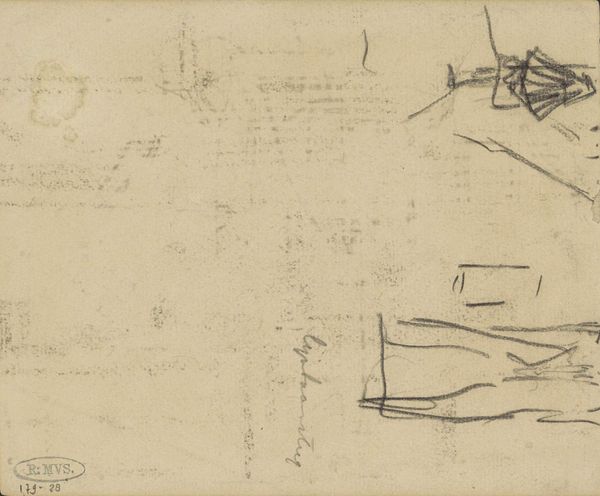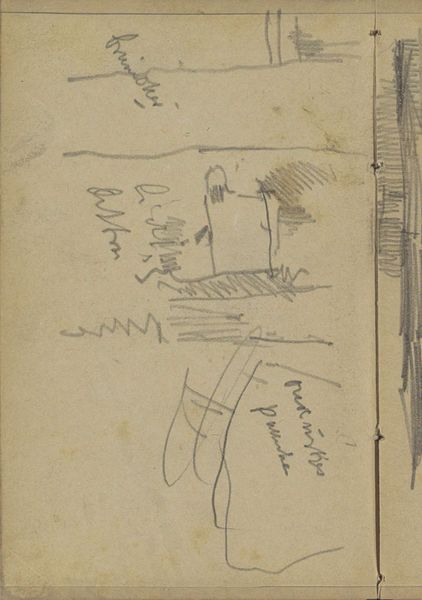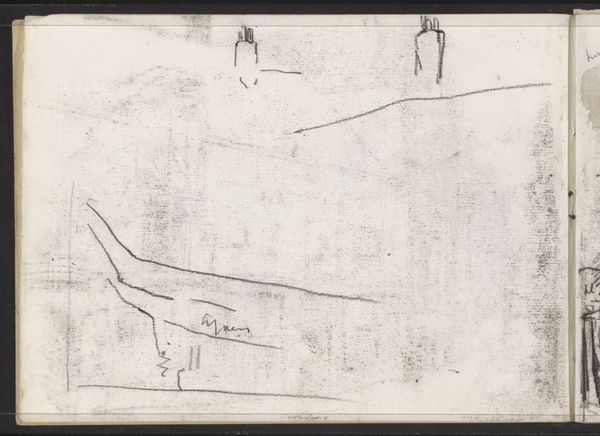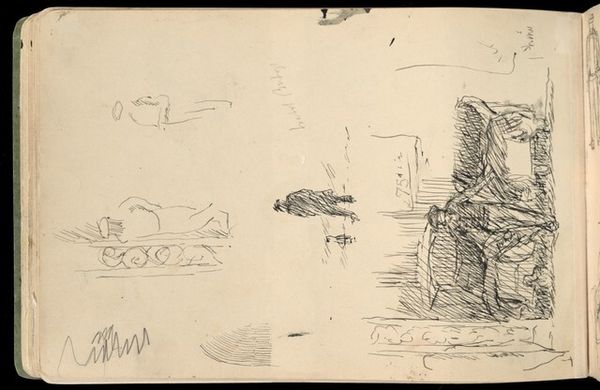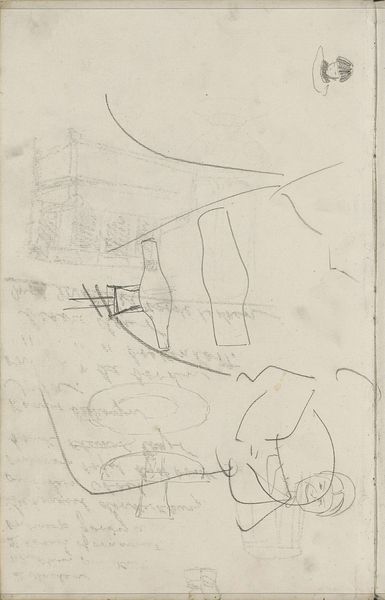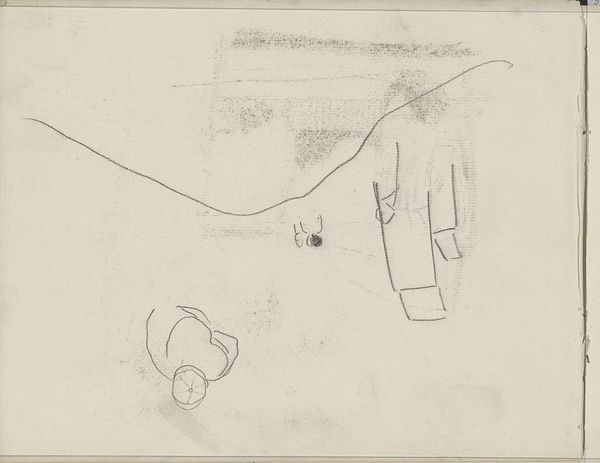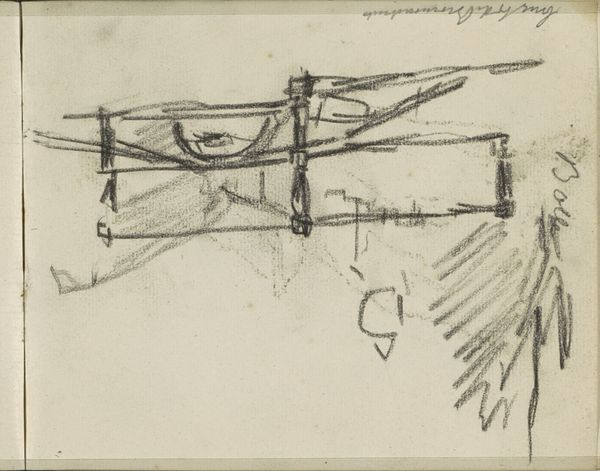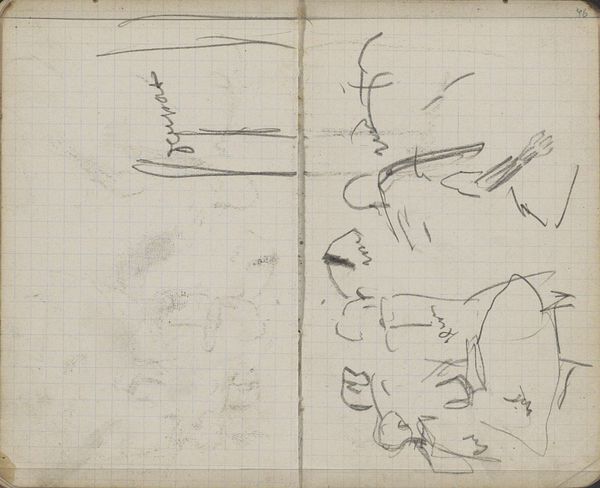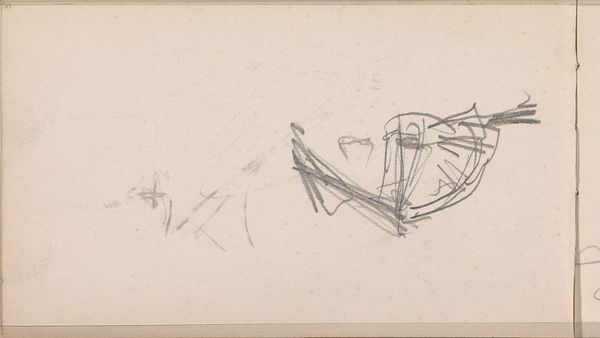
drawing, paper, pencil
#
portrait
#
drawing
#
aged paper
#
toned paper
#
light pencil work
#
quirky sketch
#
impressionism
#
sketch book
#
incomplete sketchy
#
landscape
#
paper
#
personal sketchbook
#
sketchwork
#
pencil
#
sketchbook drawing
#
sketchbook art
Copyright: Rijks Museum: Open Domain
Editor: This drawing, "Studieblad, onder andere met een neus en mannenkoppen," created between 1848 and 1888 by Anton Mauve, uses pencil on paper. It strikes me as a very personal and informal glimpse into the artist's process. What's your perspective on it? Curator: Well, what I see immediately is the emphasis on the act of *making*. Consider the materiality here. The toned paper itself isn’t pristine; it bears the marks of handling, age. The pencil, a readily available and relatively inexpensive tool, allowed Mauve to quickly capture fleeting observations. Isn’t it fascinating how the 'high art' of portraiture is broken down into a raw study of form using everyday materials? Editor: Absolutely! So you see the *process* as key to understanding the drawing? Curator: Precisely. This wasn't intended as a finished piece for the market, but as a record of visual exploration. Look at the various angles and incompleteness of the sketches. Mauve is experimenting, using readily accessible materials to develop his skill. It blurs the line between studio practice and 'high art.' Where did Mauve source his materials and was he economical? These concerns shape our perception, too. Editor: So it challenges the traditional art hierarchy. By valuing the raw sketch and considering the materials themselves. Curator: Indeed. The choice of paper, the quality of the pencil—all contribute to the image’s existence and our appreciation. Consider also the social context: pencil and paper were becoming increasingly available, impacting artistic production. Were cheaper papers made with exploited labour? The ethical choices matter. Editor: I see. Looking at it that way really shifts the focus from just the artistic skill to a broader understanding of the materials and their implications. Curator: Exactly. This work prompts us to examine the means of production and consumption inherent in artmaking itself. The value resides not only in the final image, but also the labour, the material, and the economic system surrounding its creation. Editor: That's a really helpful perspective; it gives a completely different way of appreciating this sketch!
Comments
No comments
Be the first to comment and join the conversation on the ultimate creative platform.



